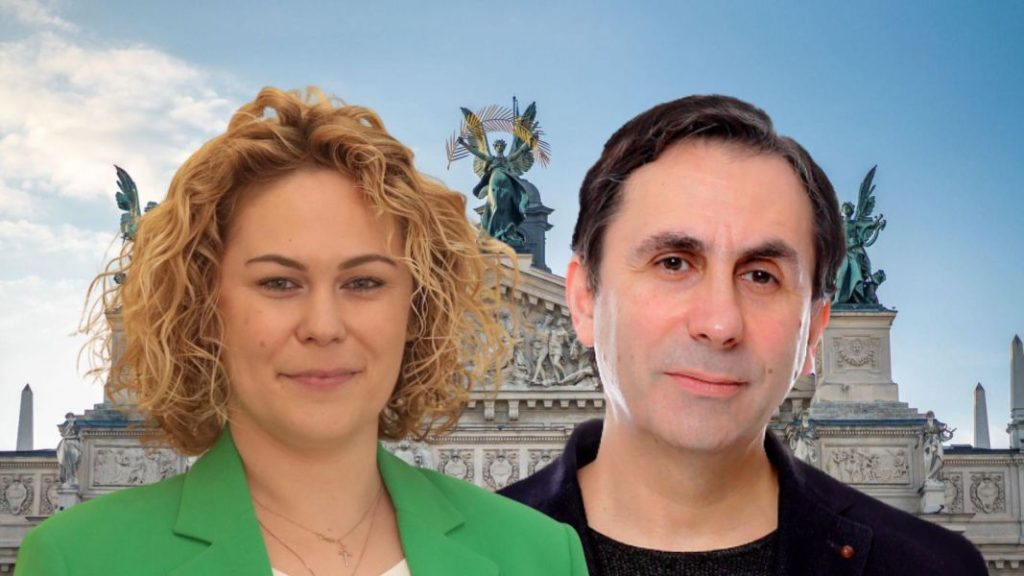As the Deputy Minister For Digital Development Of Culture in Ukraine, Anastasia Bondar is shaping the digitalisation and informatisation of Ukrainian culture. In this interview, Dinis Guarda and Anastasia Bondar discuss the challenges that the country faces and the initiatives that the ministry is taking to protect and restore the culture and heritage of Ukraine in the current state of war in the latest episode of Dinis Guarda YouTube podcast, powered by openbusinesscouncil.org and citiesabc.com.
According to Anastasia: “Culture is the glue of the nation and it is something that connects people to people, ascertaining a way in which people agree to behave.”
Ukrainian culture, as she mentions it to Dinis, has thrived at the crossroads of diverse civilizations throughout history. It represents the strength to adapt, coexist, and even flourish in the face of adversity. “It is a multicultural unification”, she says. “With over 125 nationalities mixed on Ukrainian land. It is a matter of tolerance, that we had in our history, that our culture is mixed and united in our territories.”
However, the COVID 19 pandemic and the Russian invasion urged the Ukrainian government to embrace the digital transformation phenomenon across all its sectors, including the digitalisation of its culture and heritage.
Digitalisation of Ukrainian culture and heritage
The digitalisation of Ukraine’s culture and heritage has been a significant endeavour overseen by the Ministry of Culture and Information Policy (MCIP). As the primary state authority responsible for preserving Ukraine’s cultural development and historical heritage, the MCIP plays a pivotal role in ensuring the country’s informational sovereignty.
Anastasia told Dinis that the current efforts in digitalisation of the culture of Ukraine is taking place in two directions. The first is the creation of digital inventories of immovable cultural sites.
“The Ministry of Culture is responsible for the new construction restrictions for historical areas. We are creating a system, which will have both the information about these sites and map (and geoposition) of all these buildings, that can facilitate a smoother interaction process and avoid any chaotic construction”, she said.
The second direction of the digitisation process, she explained, is towards movable heritage items and artefacts. “We have 12 million items in 2,500 museums around the country, which were documented in written format until now. We are creating a unified system which could be filled by each and every museum of our country to make an inventory of all the artefacts.”
This, she told Dinis, would not only help the ministry to connect with other cross-border cultural institutions, but would also facilitate security services, keeping a tab on black markets. “This would also help us prove, in the international arena, about the Ukrainian authenticity of any given cultural artefact”, she said.
At this point, she also explained the ministry’s current goals to organise digital events like exhibitions and auctions with digital items “that can be showcased with increased immersivity and animation, but still be able to provide our culture and art to our citizens.”
The role of MCIP in digitalising Ukrainian culture and heritage
One of the MCIP’s vital functions is the administration of a wide network of cultural institutions, including museums, libraries, cultural centres, and regional folklore hubs. These institutions are instrumental in preserving Ukraine’s rich cultural tapestry and heritage. Anastasia told Dinis that most of the people of Ukraine have relocated to other parts of the world in the current scenario of war. In this time, the ministry has been organising campaigns to create a seamless and convenient country with easy, fast, clear, and transparent communication between the government and citizens of the country.
“Developing and getting more people involved in our cultural roots is our main motive. We have launched several civil society initiatives on how to evacuate and relocate cultural goods”, she said.
The ministry also safeguards national cultural heritage sites and supports artistic education in schools and universities. It maintains its own research centres and institutions to further cultural research and innovation.
“AR and VR are one of the greatest opportunities to make the education much deeper and better and get the engagement and involvement of children into the topic. One of the ways to keep them engaged is to integrate technologies in education”, she said.
She also highlighted to Dinis that digitalization has provided new avenues to showcase and share Ukraine’s cultural heritage with the world, ensuring that the country’s rich history and traditions continue to flourish in the digital age.

Hernaldo Turrillo is a writer and author specialised in innovation, AI, DLT, SMEs, trading, investing and new trends in technology and business. He has been working for ztudium group since 2017. He is the editor of openbusinesscouncil.org, tradersdna.com, hedgethink.com, and writes regularly for intelligenthq.com, socialmediacouncil.eu. Hernaldo was born in Spain and finally settled in London, United Kingdom, after a few years of personal growth. Hernaldo finished his Journalism bachelor degree in the University of Seville, Spain, and began working as reporter in the newspaper, Europa Sur, writing about Politics and Society. He also worked as community manager and marketing advisor in Los Barrios, Spain. Innovation, technology, politics and economy are his main interests, with special focus on new trends and ethical projects. He enjoys finding himself getting lost in words, explaining what he understands from the world and helping others. Besides a journalist, he is also a thinker and proactive in digital transformation strategies. Knowledge and ideas have no limits.










